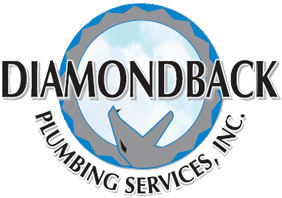Rain and storms are a part of nature. Water from bodies of water like ponds and lakes evaporates and gathers together to form clouds. Once enough water vapor builds up, colder air turns the vapor to back liquid form, and it rains back to the ground. The same water then returns to the ponds via storm drains, where the process repeats.
In cities, water cannot just absorb into the ground through the asphalt. Well, what is a stormwater drain, and how is it a vital part of a town’s infrastructure? The drains outside our homes and businesses are a part, but the system is much larger.
Many people often ask their local plumber, “what are storm drains?”, “how do they work and what are their benefits?” so we’ve written this article to help provide this information for you.
What are storm drains?
Sometimes referred to as a stormwater drain, a storm drain is a large network of connected underground pipes that are used to drain stormwater toward the closest body of water.
Though they are separate from sewers, each house or building has a drain that connects to the main public storm drain. The pipes are therefore considered both private and public systems, preventing flooding on both private and public land.
In the southern states, drains collect mostly rain. However, melted water from ice, hail, snow, or even hose water found in northern regions can also be considered stormwater. This system is an important part of a town or city, allowing natural vegetation to be watered while the excess returns to a nearby pond or lake. Additionally, storm drains act as flood prevention in harsh weather.
What does a storm drain look like?
As we mentioned, the small storm drain grate that often sits outside our homes and businesses is one of the many parts of the main storm drain system. While it is not used to collect water for the sewers, the grate and the large rectangular basin underneath it catch and collect water to be taken to a clean lake or pond.
Connected to that basin – also called a catch basin – is an underground network of small pipes that drain the stormwater to the actual storm drain. A storm drain is a massive pipe that runs through the infrastructure underneath the roads we drive on. Eventually, the drain opens out through an above-ground barrier, where the stormwater is released. If you have ever seen concrete barriers while driving or while on a walk, you’ve seen where a storm drain opens out.
How do storm drains work?
On a rainy day, a storm drain will only see much use if it rains the entire day.
As the rain falls, the stormwater collects along the sides of residential and commercial roads and is pushed into the catch basin along the sides of the road until it fills up to where its drain pipes are. The stormwater will then flow out into the storm drains, which move it to a location closer to a pond or lake.
During extremely heavy storms and floods, the storm drain system works the same way but at a much faster rate. A catch basin isn’t entirely foolproof and can overflow if enough stormwater fills it. If given enough time and if the basin isn’t clogged, any flood water can be quickly drained, reducing the risk of terrible property damage.
The difference between a sewer and a storm drain
It is common to mistake these drainpipes as part of the sewer system, however, this is largely false.
On private property like your home, rain and melted snow run off your roof and down the pipes along the side of your home. When enough of it falls, the water runs off the driveway and into the catch basin. Since there’s little to no food or soap-based waste in that stormwater, it isn’t connected to the sewers and doesn’t need treatment.
Sewer drains, on the other hand, move wastewater to a water plant for cleaning and treatment.
This wastewater can have all kinds of things in it, like soap, dirt and human waste.
All that waste can cause the water to become toxic and can cause the water from storm drains to become polluted if they come into contact. As a result of this, sewage water requires a separate method of transportation to a water treatment facility.
Signs your storm drain is blocked or clogged
So, what do storm drains do? To quickly recap, they move stormwater from the catch basin outside your home to a nearby lake to prevent flooding. When it storms heavily, you may notice the catch basin overflowing. Given some time after the storm, that water should drain away like normal.
However, the water won’t go away if something is clogging the drain pipes.
If water floods over your lawn well past the end of a storm or if you hear loud gurgling sounds, you need to call a professional to remove the clog as soon as possible. Every point in the storm drainage system plays a big role in the community’s water management system, so any affected areas can negatively impact everyone in the neighborhood.
Takeaway
A storm drain is a part of a network of pipes that takes the stormwater that runs off our roofs and driveways and releases it where the water returns into the clouds. If you have ever wondered, “what are storm drains?” our home’s eavestroughs and downpipe are two of the many important parts of the system.
A storm drain is more than just a basin that drains water. It prevents any damage from happening to our city’s roads while providing enough water to make the greenery lush. Keeping the runoff stormwater clean is important to prevent blockages and protect the environment. The entire system comprises crucial steps needed to help prevent flooding.
If you suspect that your storm drain or any parts on your property are damaged, call us today to schedule an appointment.
